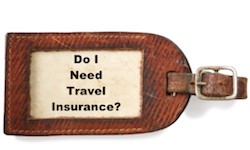How to Travel With a CPAP Machine

How to Travel With a CPAP Machine
According to the folks at sleepapnea.org, there are 22 million Americans suffering from sleep apnea with 80% of the moderate and severe cases undiagnosed. I was speaking with my doctor at Mayo Clinic the other day and I was shocked when he told me the number of folks who have sleep apnea.
I (David) have been sleeping with a CPAP machine for close to 20 years. And, as a world traveler, I’ve had to deal with carrying these machines all over the world.
I just got a new CPAP machine yesterday and as we get quite a few questions about traveling with one of these contraptions, I thought it was high time I wrote an article on the subject.
 10 Tips for Traveling With Your CPAP Machine
10 Tips for Traveling With Your CPAP Machine
- While it is allowed, don’t pack your CPAP in your checked luggage. If your luggage is lost or delayed, you will regret that decision. Plus, these machines tend to be expensive and are a likely target for baggage thieves.
- You can pack your CPAP in your carry-on luggage, but since CPAP machines are covered under the American’s with Disabilities Act, they do not count as one of your carry-on items. So, if you want to carry it separately in its case, you can.
- TSA inspectors are very accustomed to seeing CPAP machines. Lately, I’ve been able to leave my machine in my carry-on luggage and put it through the scanners. However, don’t be surprised if they ask you to pull it out for additional testing.
- If you are traveling overseas, make certain that you have all of the necessary electrical adapters to plug your device into the wall at your destination. CPAP machines have built-in transformers, so your machine is likely capable of handling up to 240 volts just like your other electronic devices. However, double-check that!
- When I’m traveling, I don’t mess with a humidifier on my CPAP. If that doesn’t work for you, consider contacting the hotel or cruise line to request distilled water for your device. Most cruise lines and hotels are accustomed to their travelers bringing CPAP machines, so it is very likely that they will have distilled water available in your room for you.
- If you’re like me, and can’t sleep without your CPAP, then have a backup plan in the unlikely event that your machine dies while traveling. I keep a copy of my CPAP prescription in the cloud and I also have my CPAP technician’s phone number on my cell phone. I’ve had one die on me while traveling. It’s not fun.
- Pack a fairly long extension cord in your CPAP case. I can’t tell you how many times there was no electrical outlet near the headboard on a cruise ship or in a hotel.
- If you plan to use your CPAP on board the plane, make certain that you know your airlines’ policy regarding using a CPAP onboard. Delta Airline’s website, for example, has a list of acceptable CPAP machines that can be used on board their planes. Just go to your airline’s website and do a search for CPAP.
- If you travel frequently, you might consider purchasing one of the new much smaller CPAP devices. I just ordered one yesterday (Transcend Portable CPAP) and the footprint in the case appears to be half that of my home device. We’ll see how it goes.
- Lastly, as I used to say in the Boy Scout motto: Be Prepared. Do a little homework before you go. You’ll be glad you did.
If you need to check on electrical adapters and such for overseas travel, CLICK HERE for another article we have written on the topic.
If you enjoyed this article, sign up for our travel newsletter to keep abreast of our best travel tips, on-location reviews, exclusive travel offers, group travel events, and much more.

Roaming Boomers Travel Services is an Independent Affiliate of Cadence, a Virtuoso® member. CST#201120-40
 The Roaming Boomers
The Roaming Boomers




Thanks, for the nice CPAP info. I did not know you could ask for distilled water and never thought about taking a prescription or having the technician’s phone number. Will definitely update our travel list!
Hi Judy,
David, until I read your article on How To Travel With a CPAP Machine, I was totally unaware that it would not count as an extra bag when “carried on” since it is covered under the American’s with Disabilities Act. This is great news, as I often have not taken it with me on short trips due to fear of loss in “checking” or thinking I had to count it for “carry on”. I’m sure there are many travelers who will appreciate your “notice” as much as I. THANKS! George
Hi George,